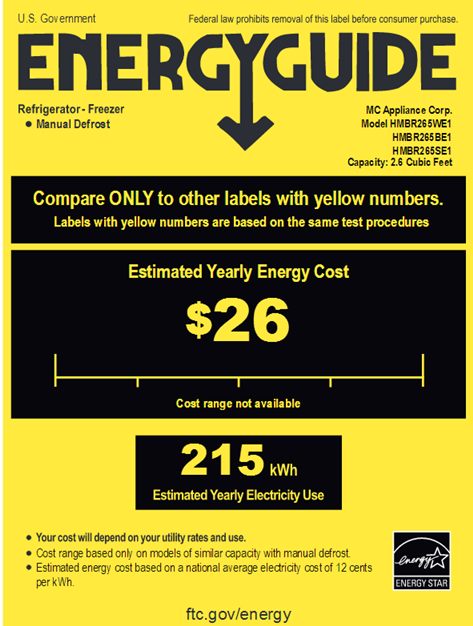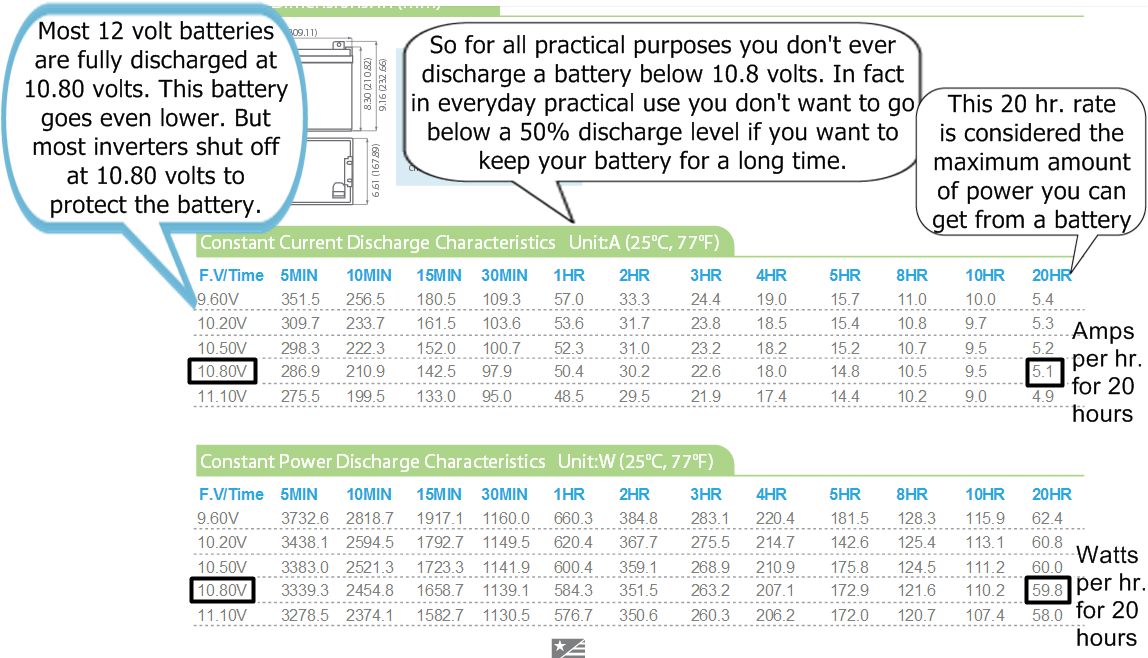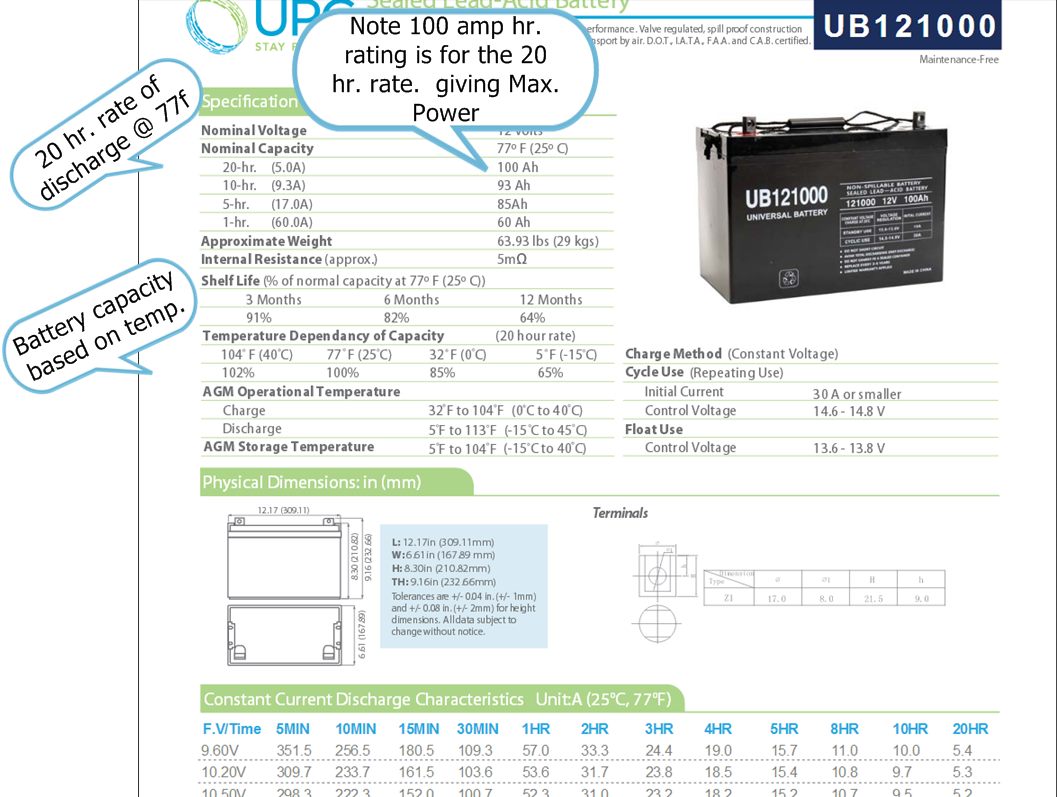

HOME
Consultation
Frequently asked questions
Guidebooks
How the system works
Technical details
Contact us
Welcome to R35Solar
This is the technical details page. Here you will find some of the calculations needed to size your solar generator / power system.
Brought to you by the Solar power people you can trust.
This information is dated, look at the guide book section for up to date info.
As mentioned earlier, a solar generator is a battery operated system most of the time. With the batteries supplying the power to the device in use. The panels are mostly used to charge the battery/s. See Understanding Solar here if you are not familiar with the basic concepts.
How long a system will run under
load is based directly on the load or device being powered. And
how long it will be turned on.
I cannot tell you how much your load will be because all devices vary in how much power they need to operate. For instance, a Ryobi circular saw may need 1.6 amps to run, and a Black & Decker saw may only need 1.2 amps. Even though both of them do the same thing, they are made to each manufacturers specifications. And the same is true of all devices, whether its a TV or Drill, or Computer or even a refrigerator. All these items have different requirements for power. And it is up to YOU to determine the power needs you have.
Here is how you do that:
In this example, I'm going to need my little dorm size refrigerator and my laptop computer to use in my trailer for my on-site job.
So I first look up my fridge on the web to see what kind of power usage it has by looking at either the power requirements sticker on the actual fridge, or the "Energy Guide" Label.

Ok, so the government says it uses 215 kWh or Kilowatt hours per year. Well I need to know what it uses per day so I divide that number by 365.
215/365= 0.589 kwh per day. That's just a little more than half a kilowatt hour per day. Now, I need to know the hourly rate so I divide the per day rate by 24 hrs to get the hourly rate.
0.589/24= 0.0245 kwh per hour. Or 24.5 watts per hour since a kwh is a 1000 watts per hour. So .0245 kwh is 24.5 watt hours. Now I can calculate the running AVERAGE current needs. I said average because it contains a motor and electric motors require very large amounts of current to start. The formula for power is:
P = E x I Where P is power in watts, E is Voltage, and I is amperage in amps. We know the Power is 24.5 watts, and the fridge runs on 120 volts to we can now determine the current with this formula: I= P/E so
24.5/120 = .204 amps average running current.
Now we know that the fridge is
using:
24.5 watts per hour
at a rate of .204 amps(rounded to .20)
at 120 volts.
I already know the consumption of my laptop is 80 watts per hour because
the tag on the power supply says 80 watts. Note that some tags will say
the actual current they draw. Using the same formula above to find the
current draw (amperage), I take 80/120 =
.66 amps.
Now I know the total current needed is .66 + .20 = .86 amps at 120 volts. This is the continuous average current draw. Converting that to watts for the power inverter which is the device that generates the 120 volts AC to power things is next. P = I x E or Power = voltage times current.
120 x .86 = 103.2 watts.
Now we know that the total power,
on average, not accounting for surges that only last a split second, is
103.2 watts per hour all the time that both the fridge and laptop are
on. Now the power inverter will give you the 103 watts, but, it will
take more power than that to run it. The power inverters we use are
rated at almost 90% efficiency so we will use that number. By the way,
that's a very high rating. Now we need to calculate the power needs of
the inverter which will be supplying 103 watts. (rounded off) The
formula for that is P-out /.9 = P-in or
103 /.9 = 114.4 watts draw
Now we know we need 114.4 watts off our battery/s continuously to keep our fridge and laptop going.
Now our inverter will keep drawing about 114 watts from the battery until the battery/s reache 10.8 volts. This is the voltage level most inverters are set to shut off at to keep from damaging the battery. It is also the most commonly used figure to indicate 100% discharge on a 12 volt battery system. In other words, when a lead acid battery, of any type reaches 10.8 volts, it is considered fully discharged. So inverter makers shut off their inverters at that level too.
There are two ways we can now calculate how long our system will run with this load. Again our example is our 800 watt system being used for these calculations. Below is a chart of the battery we use in the 800 watt system. It has a 20 hr. rate of 5 amps. That means this battery can give you 5 amps for 20 full hours before 100 percent discharge. So we need to see what the amperage is for our power need of 114.4 watts from above calculations.
Since a battery voltage changes as it discharges, I will use the "average" voltage of 12 volts for our battery. (12 volts is actually about 35% discharge level) Again the formula we need is I = P/E
114.4 / 12 = 9.53 amps as our current draw on a continuous basis. Now lets look at our battery chart and see how long it can supply that kind of current or amps.

Note the top part of the chart shows 9.5 amps in the 10HR column. This is how long the system will run with NO Sunlight and will completely discharge the battery requiring a recharge before use again. NOTE that I said with NO SUNLIGHT, which is not the case with the sun shining on the solar panel. The 800 watt system is using a 100 watt panel which will supply about 90 watts of the 114 watts we need to run the inverter for our load in this example. This means that the battery, although discharging, is not using any where near its capacity during the daylight hours. Taking 90 watts from the panel, (estimated losses from wiring and charge controller reduces the panels usable output slightly)and deducting it from our load requirement of 114 watts, we see we only need 24 watts from the battery to make up the difference. 24 watts at 12 volts is 2 amps from our battery. What this means is the battery will easily supply our needs during daylight and another 12 to 15 hours after sunset. And of course we're not likely to leave our laptop on all night so that would only leave our fridge running which is only 24.5 watts by itself. And based upon that, you can see that the 800 watt system will run the fridge all the time and the laptop for several hours all the way up to close to 20 hours if needed. But running the laptop for only a few hours a day will allow the solar panel to fully charge the battery, and run the fridge 24/7.
This is a real world example of what you can do. This example shows what you can do Long Term. We did not get into the scenario of higher power needs for shorter times, but the 800 watt system can provide much higher power levels. It just won't run as long, but you can use the above example and the battery chart to get a pretty good estimate of what you can expect.
Or, if you just want to plug it in and run it without all this fuss, just do it. The power inverter is over-temperature protected, low battery protected, over voltage protected too. If you need to run a big refrigerator, just plug it in and see how long it will run. Just guessing, I would say the 800 watt system can run a fairly large fridge for at least 2 to 5 hours. Maybe even more, it just depends on how much power it needs. The battery we use is an extremely powerful battery and is built for these types of demands. If emergency power is what you want to keep the freezer going, it will do that too. You just have to try it and see.
Now, for those of you who want a system for Off-Grid use or LONG TERM USE, you need to know more. Look at the battery chart below to see what happens to battery life you discharge it to a 100% level. It's only about 220 cycles. But, look what happens if you keep it at 70% charge, that is 30% discharge level at all times....The cycles go past a whopping 1200 cycles.... If you want long term, in most cases you need a larger system so you are not taxing the battery/s too much.

Below is the basic information chart on the ub121000 AGM Battery we use. It provides further information on battery capacity based upon tempeture and shelf life among many other details. You can also download the battery Datasheet here...

Thank you for visiting us today.

So
What are you waiting for, Contact us with your questions today
..